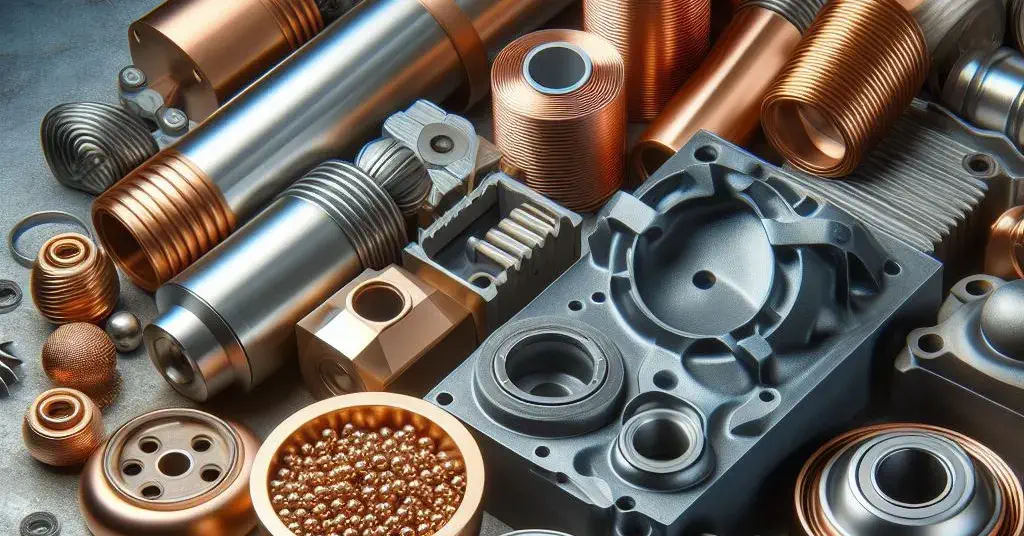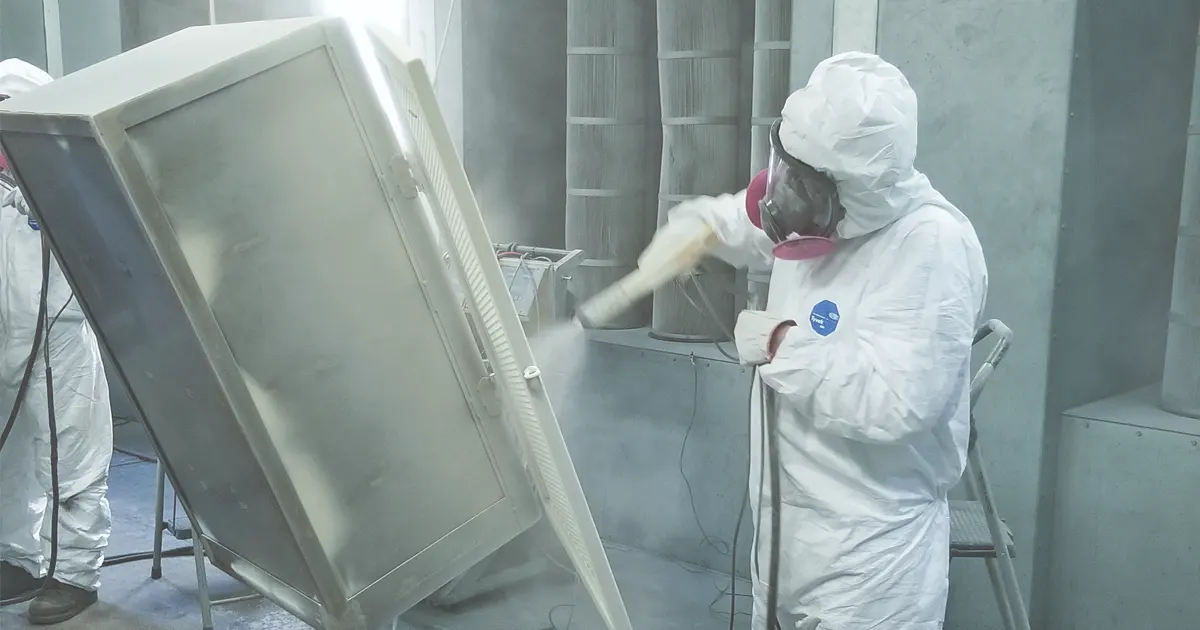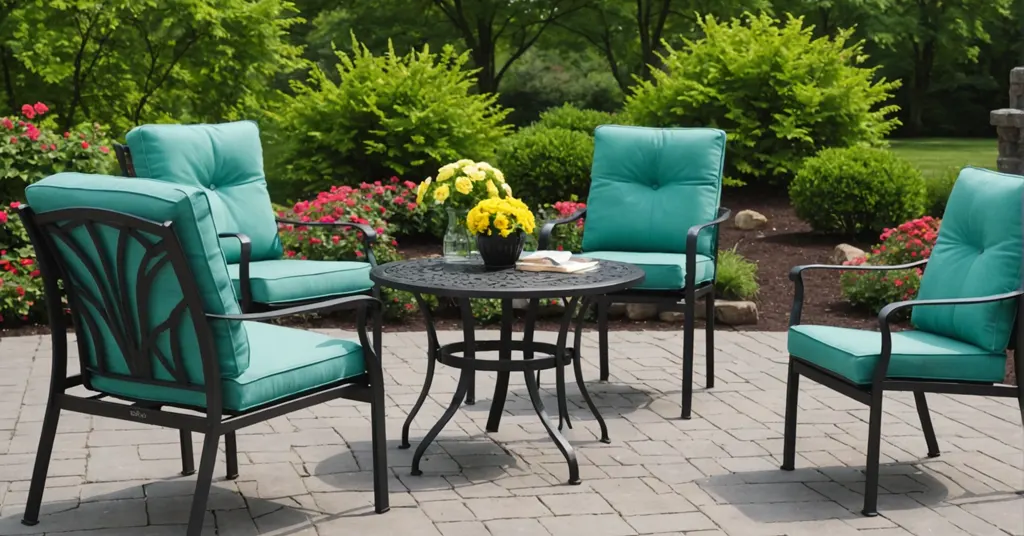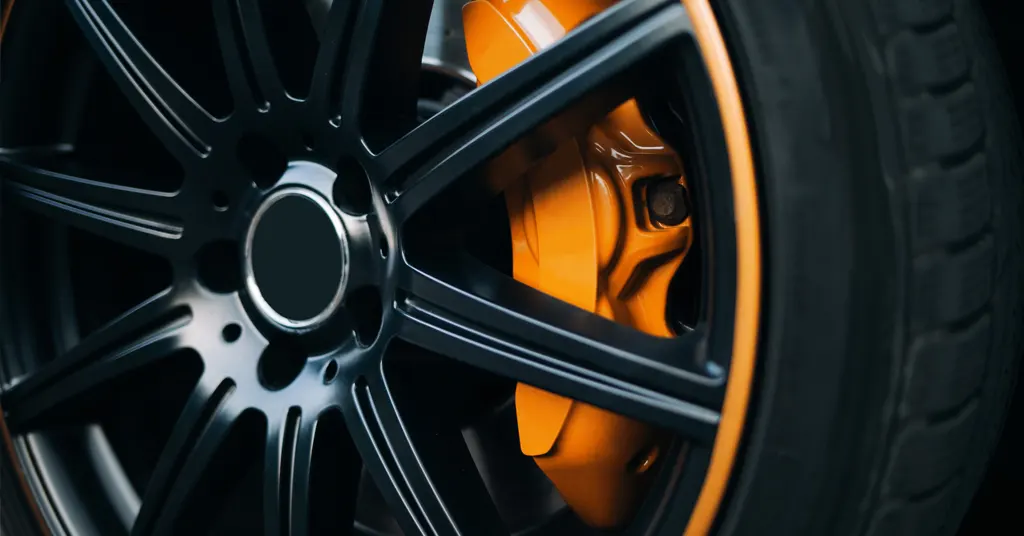Uneven powder coating adhesion on metal products: reasons and solutions
When powder coating is sprayed on metal products, uneven electrostatic adsorption is often encountered. Uneven spraying of powder coating will cause inconsistent color on the metal surface, differences in powder coating thickness, easy peeling of the powder coating, poor corrosion resistance, and problems such as bubbles and pinholes.
The following are solutions to uneven electrostatic adsorption of powder coatings.
- Surface preparation and pretreatment of metal products
- Adjust powder coating spray equipment
- Performance adjustment of powder coatings
- Choosing the Right Powder Coating Spraying Technology
- Optimization of spraying environment for powder coatings
- Use electrostatic field equalization technology
Surface preparation and pretreatment of metal products
Surface treatment of metal workpieces is one of the key factors to improve the uniform adsorption of powder coatings. The surface of metal workpieces with a clean surface, no oil stains, no rust, and no impurities can make the electrostatic adsorption effect of powder coatings better. Usually we use pickling, alkali cleaning, sandblasting and ultrasonic methods to clean the surface of metal workpieces. If there is rust on the surface of the metal workpiece, we can also use rust remover or mechanical rust removal. There are also some metal workpieces that may have too smooth surfaces, resulting in small contact areas between the powder coating particles and uneven adsorption. We can use grinding to roughen the surface of the metal workpieces to increase the contact area between the powder coating particles and them.
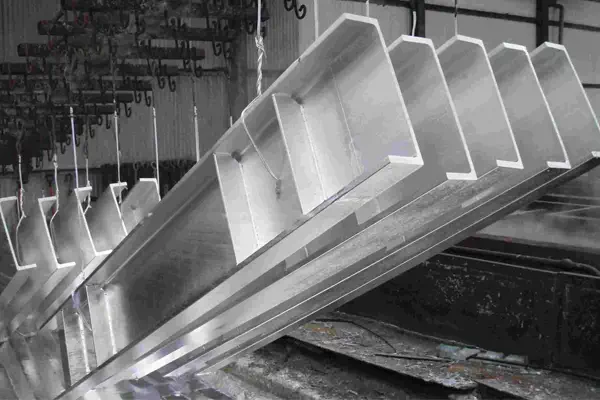
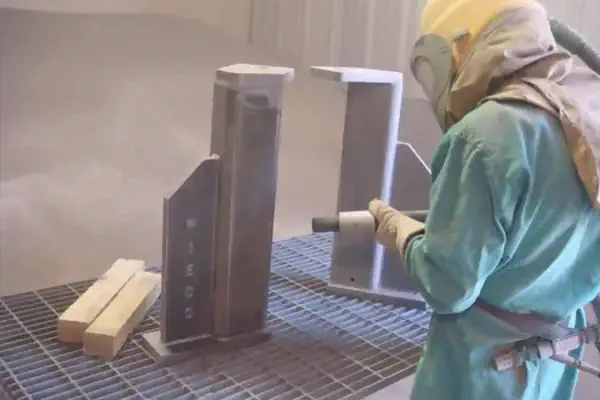
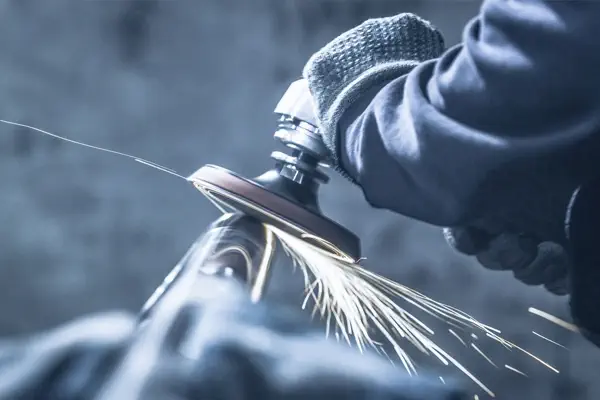
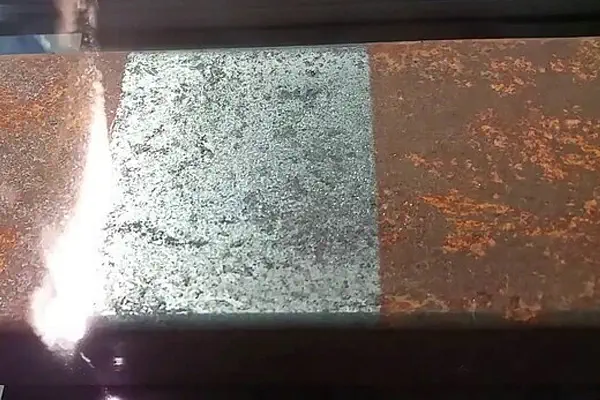
Adjust powder coating spray equipment
By adjusting the voltage, current, spraying distance, spraying speed and other related parameters of the powder coating spraying equipment, the electrostatic adsorption effect of the powder coating on the surface of the metal workpiece can be effectively improved.
The higher the spraying voltage, the greater the electrostatic charge carried by the powder coating, and the better the adsorption effect of the powder coating. Usually the voltage can be controlled between 10-30kv. The spraying current is usually controlled between 5-10mA. Excessive current will cause uneven coating thickness of the powder coating.
The closer the powder coating gun is to the metal workpiece, the easier it is for the electrostatic charge of the powder coating to interact with it, but it should be noted that this may cause splashing and waste of powder coating. Generally, the distance between the powder spray gun and the surface of the metal workpiece is about 10-20cm.
Spraying speed is also crucial to the spraying effect. Generally, the spraying speed of powder coating is controlled at about 2-5m/min.
Performance adjustment of powder coatings
During the production process, powder coatings undergo melting, extrusion, cooling and pulverization. Differences in the performance of crushing equipment can cause uneven particle size distribution of powder coatings. Some powder coatings have poor electrical conductivity due to additives or special raw materials, which is also one of the reasons for uneven electrostatic adsorption during the spraying process. In response to the above problems, the particle size distribution can be improved by adjusting the crushing process and screening process of powder coatings. Carbon black, metal powder, zinc oxide and other ingredients can also be added to the preparation formula of powder coatings to improve its conductivity.
Choosing the Right Powder Coating Spraying Technology
A variety of coating techniques and methods can be used to adjust the uneven electrostatic spraying of powder coatings. Here are some techniques that may help resolve uneven spray problems:
- Multi-gun spraying system: Using multiple powder coating guns for unified spraying can improve the uniformity of the coating. Different powder-coating guns can be positioned at different angles, ensuring that all angles and hard-to-reach areas of metal workpieces can be covered.
- Reverse Spray: Reverse spraying is a technique that changes the direction of traditional spraying. It reverses the direction of the gun head to ensure that the coating can cover all corners of the surface. This helps overcome areas that conventional spraying cannot reach.
- Rotational Gun: A rotary gun is a spray system designed to cover complex-shaped surfaces. The gun head can be rotated to ensure that the coating is evenly distributed on curved surfaces and edges.
- Multi-electrode system: Multi-electrode systems can generate electrostatic fields at different locations, ensuring that the powder is evenly distributed across the entire surface. This is particularly useful for large or complex-shaped workpieces.
- Intelligent control system: The advanced intelligent control system can monitor the uniformity of the coating and instantly adjust the powder coating parameters to optimize the spraying process.
- Powder nozzle selection: Different types and shapes of powder spray gun nozzles are suitable for different metal workpiece coating needs. Selecting the appropriate nozzle can help solve the problem of uneven powder coating application.
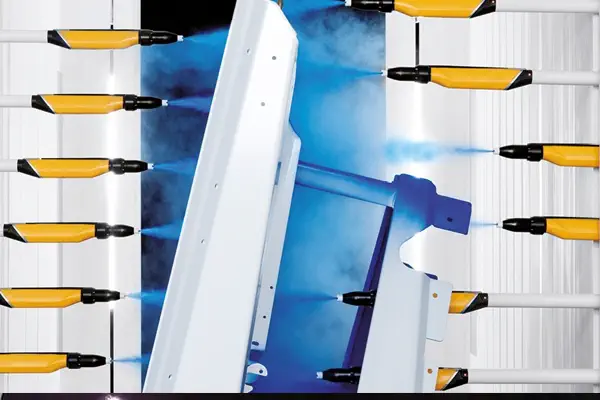
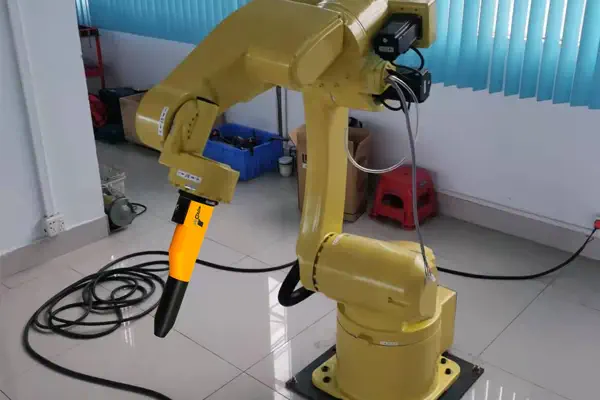
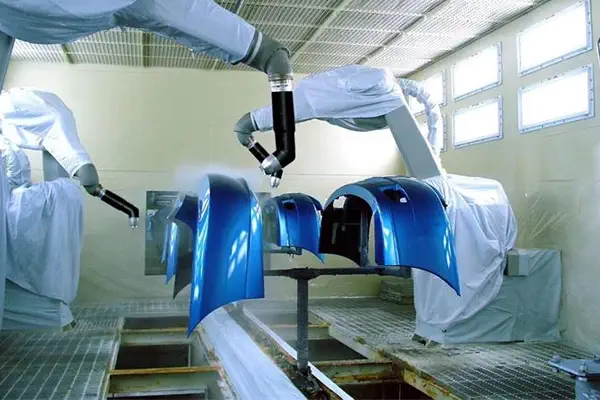
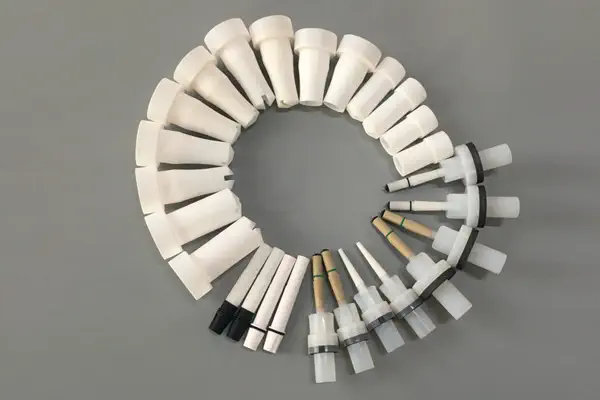
Optimization of spraying environment for powder coatings
For the spraying environment of powder coatings, the four major factors: impurities in the air, temperature and humidity, electrostatic ground, and airflow have the greatest impact on the uneven electrostatic adsorption of powder coatings. The following are some specific methods to improve the powder coating spraying environment to solve the problem of uneven electrostatic adsorption.
- Temperature and humidity control: Different metal workpieces and powder coating types have certain differences in the temperature and humidity requirements of the spraying environment. Taking epoxy polyester powder coating as an example, its optimal spraying environment should be set to 20-25°C, and the humidity should be controlled between 50-60%
- Keep air flowing: Powder coating spray booths should be equipped with a ventilation system to avoid uneven adsorption of powder coatings caused by air turbulence. In addition, air flow can also improve the working environment of powder coating operators and maintain better working conditions.
- Dust removal system: The presence of particulate impurities in the air can also affect the electrostatic adsorption of powder coatings, so it is necessary to equip a dust removal system. Note that the dust removal system and powder coating recycling system here are two independent operating systems.
- Static floors: Use static floors or anti-static floors to help eliminate static electricity buildup. This helps prevent unnecessary build-up of static electricity in the spray area, thereby improving coating uniformity
Use electrostatic field equalization technology
Electrostatic field equalization technology is a method used to ensure that the electrostatic field is evenly distributed within the work area. In the powder coating environment, electrostatic field equalization technology helps reduce the uneven electrostatic adsorption force of the coating, thereby improving the uniformity and quality of the coating. Here are some ways to implement electrostatic field equalization techniques:
- Electrostatic field equalization device: Use a specially designed electrostatic field equalization device, such as an electrostatic field equalization grid, to homogenize the electrostatic field in the work area. These devices ensure a uniform electrostatic effect over the entire area by adjusting the distribution of the electric field.
- Electrode adjustment: Adjust the electrode position and angle of the spray equipment to ensure that the electrostatic field evenly covers the entire workpiece surface. This helps prevent electrostatic fields from building up in certain areas, reducing uneven adsorption.
- Air ion balance: Use equipment such as an ion generator or loaded ion rod to generate an appropriate amount of positive and negative ions to maintain the ion balance in the air. This helps reduce electrostatic field inhomogeneities.
- Work area design: Ensure that the design of the work area promotes uniform distribution of electrostatic fields. Avoid sharp corners and protrusions to prevent static electricity from building up in these areas.
Conclusion
Achieving uniform powder coating adhesion on metal products is a critical task, and a successful coating process often begins with surface preparation and pre-treatment. By ensuring the metal surface is properly prepared, we can maximize the adhesion of the paint to the metal. In addition, adjusting the parameters and performance of powder coating spray equipment, including the use of electrostatic field equalization technology, is also critical to achieving a uniform coating. Choosing the appropriate spray technique and optimizing the spray environment, as well as carefully selecting the right powder coating, are key factors in ensuring uniform adhesion of the coating. By combining these steps and employing electric field equalization techniques, we can effectively solve the problem of uneven powder coating adhesion on metal products and achieve high-quality, consistent coating results.
Have Anything To Ask Us?

